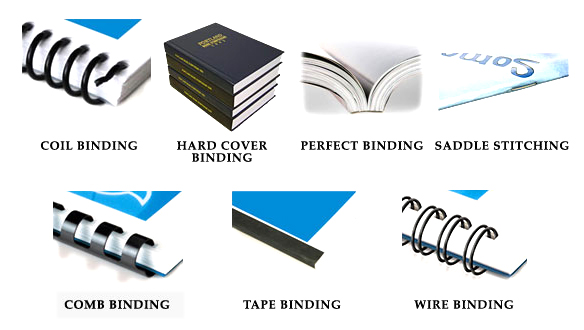You can submit a quote request on our website or call and talk to one of our customer service representatives – 610-993-8686
FAQ
We prefer print-ready PDF files with crop marks and bleed. InDesign files packaged with all fonts and art/images is also a preferred option. If the piece is more than 4 pages, we prefer single pages (not spreads) with crop marks and bleed. Please know that while we prefer PDF files we do work with almost any file format (Word, Excel, Powerpoint, Publisher, Photoshop, Illustrator, QuarkXpress, etc). Please call us at 800-746-4264 if you have any questions and we would be happy to help you.
See our resources pages to download “How to create a print-ready pdf in InDesign, Photoshop, and Illustrator”. Or click here.
Bleed is ink that prints beyond the trim edge of the page to ensure it extends to the edge of the page after trimming. Bleed should be .125 inches on all edges where bleed is desired.
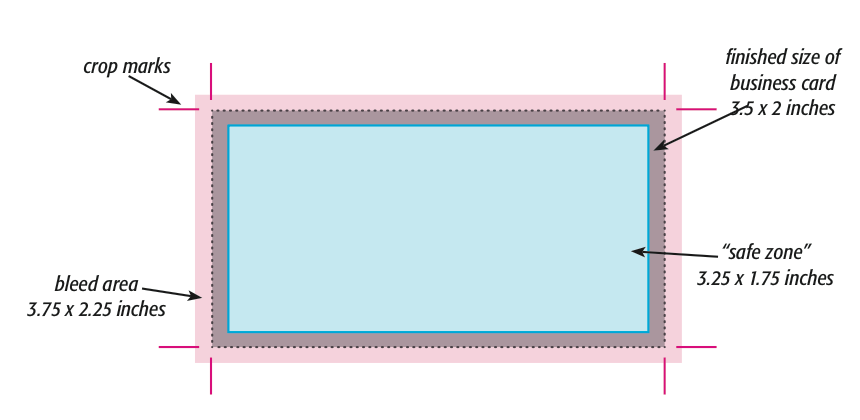
The resolution should be 300 dpi at 100%. For larger wide format printing the resolution should not be less than 150 dpi at 100%
See our resource section to download templates for free or click here.
You can email us files up to 10MB. For larger files please use our secure file share which you can access by clicking the “Upload File” button on our website header or click here.
Printers and monitors produce colors differently. Monitors use the RGB (red, green, blue) color model, which usually supports a wider spectrum of colors. Printers use the CMYK (cyan, magenta, yellow, black) color model, which can reproduce most—but not all—of the colors in the RGB color model. Depending on the equipment used, CMYK generally matches 85–90% of the colors in the RGB model.
We accept Visa, Mastercard and American Express which you can provide over the phone. If you setup an account with us we accept checks and company purchase orders.
See our resource section to download templates for postcards/mailers with USPS requirement guidelines or click here. Paper mail can be classified into 3 categories/size- “postcard”, “letter” and “flat”. Below is a quick reference guideline for first class, standard (aka marketing mail) and non-profit postage rates by size.
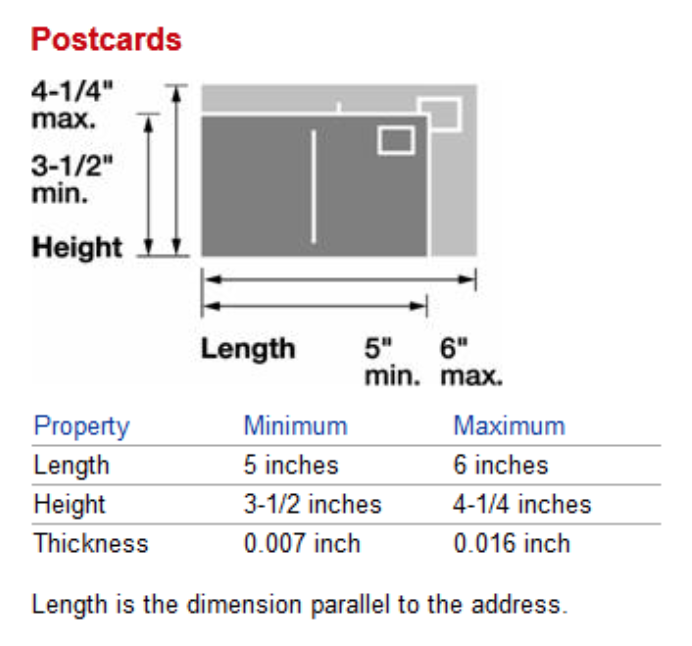
*First class presort postage rates range from $0.34 to $0.253 (Under 1 oz). Expected Delivery Day: 1-3 days
Standard presort not available for postcard size.
* based on Jan 22, 2017 rates
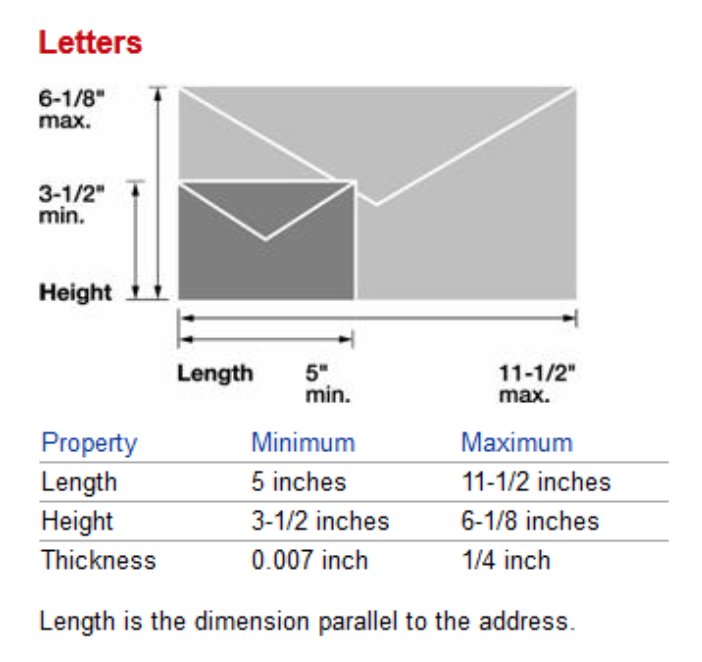
*First class presort postage rates range from $0.49 to $0.373 (Under 1 oz). Expected Delivery Day: 1-3 days
*Standard presort postage rates range from $0.288 to $0.25 (under 3.5 oz). Expected Delivery Day: 3-10 days
*Non-Profit postage rates range from $0.171 to $0.134 (under 3.5 oz). Expected Delivery Day: 3-10 days
* based on Jan 22, 2017 rates
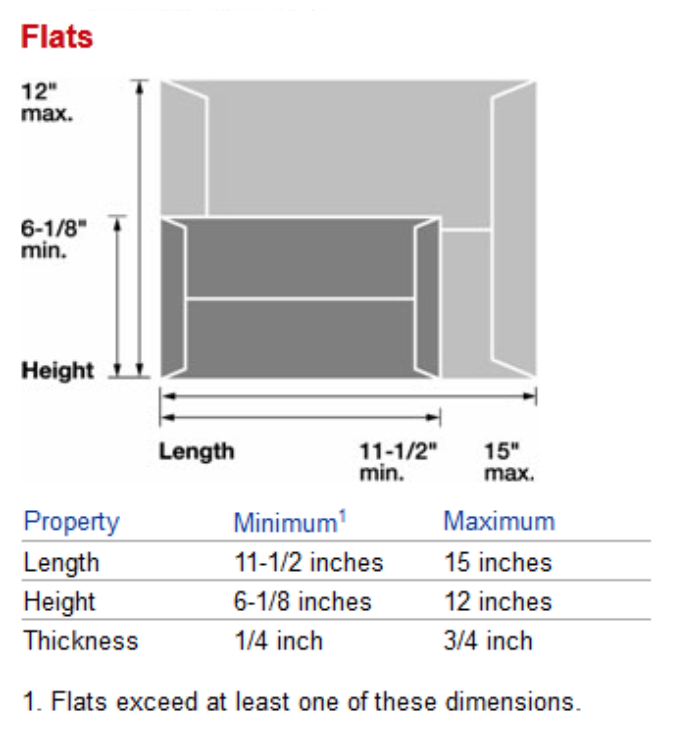
*First class presort postage rates range from $0.98 to $0.446 (Under 1 oz). Expected Delivery Day: 1-3 days
*Standard presort postage rates range from $0.55 to $0.387 (under 3.5 oz). Expected Delivery Day: 3-10 days
*Non-Profit postage rates range from $0.407 to $0.244 (under 3.5 oz). Expected Delivery Day: 3-10 days
* based on Jan 22, 2017 rates
Standard mail must be less than 16 ounces and must meet a minimum quantity of 200 pieces or 50 pounds of mail. Standard Mail, also known as “bulk mail”, is processed by the USPS on a “time available” basis. Standard mail is not forwarded or returned if undeliverable unless a special endorsement is used. Standard mail will typically be delivered in under 5 business days locally, but nationwide it could take 2 to 3 weeks. Standard Mail should not be used for time-sensitive mail. Standard Mail is the least expensive postage mode, approximately 32 percent less than the price of first class.
First-class mail must weigh 13 ounces or less. Pieces over 13 ounces can be sent as Priority Mail. USPS first-class delivery is given priority over standard mail, and local mail will typically be delivered in 2-3 days. Nationally, first-class mail should be delivered in about 4 days. First-class mail postage includes forwarding and return services with no additional charge.
Staple, saddle stitch, spiral, wire-o, comb, and perfect binding – see below for images of different types of binding- Image attached of binding samples
